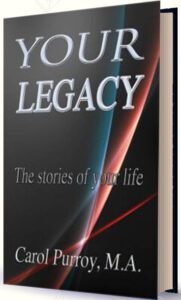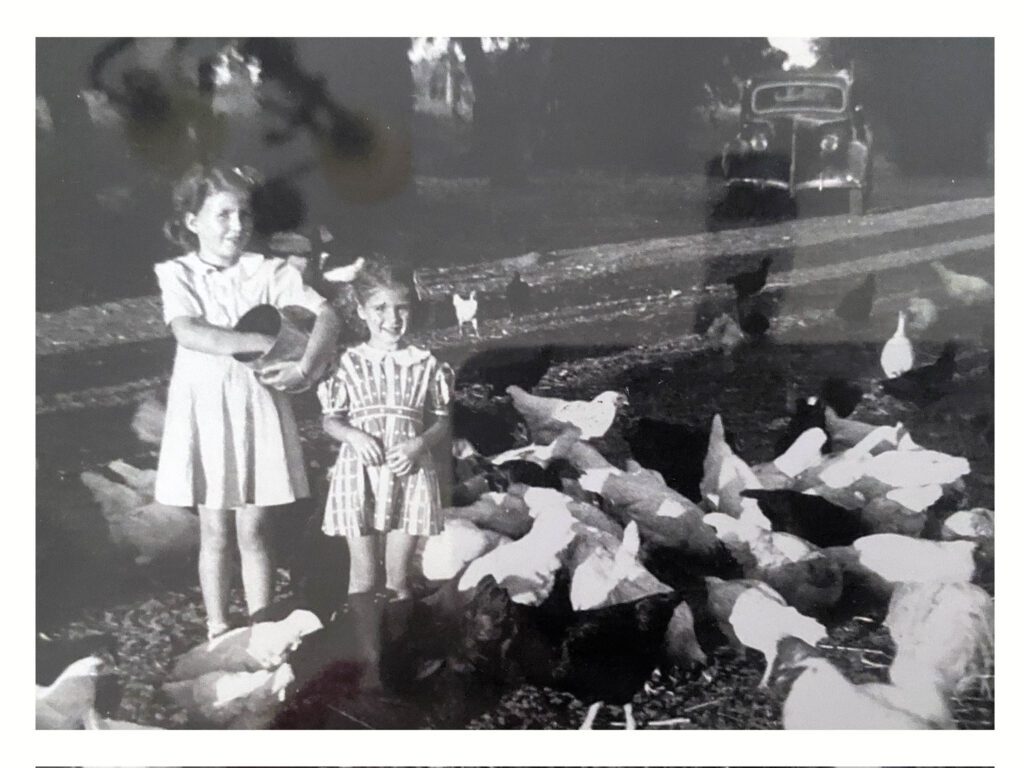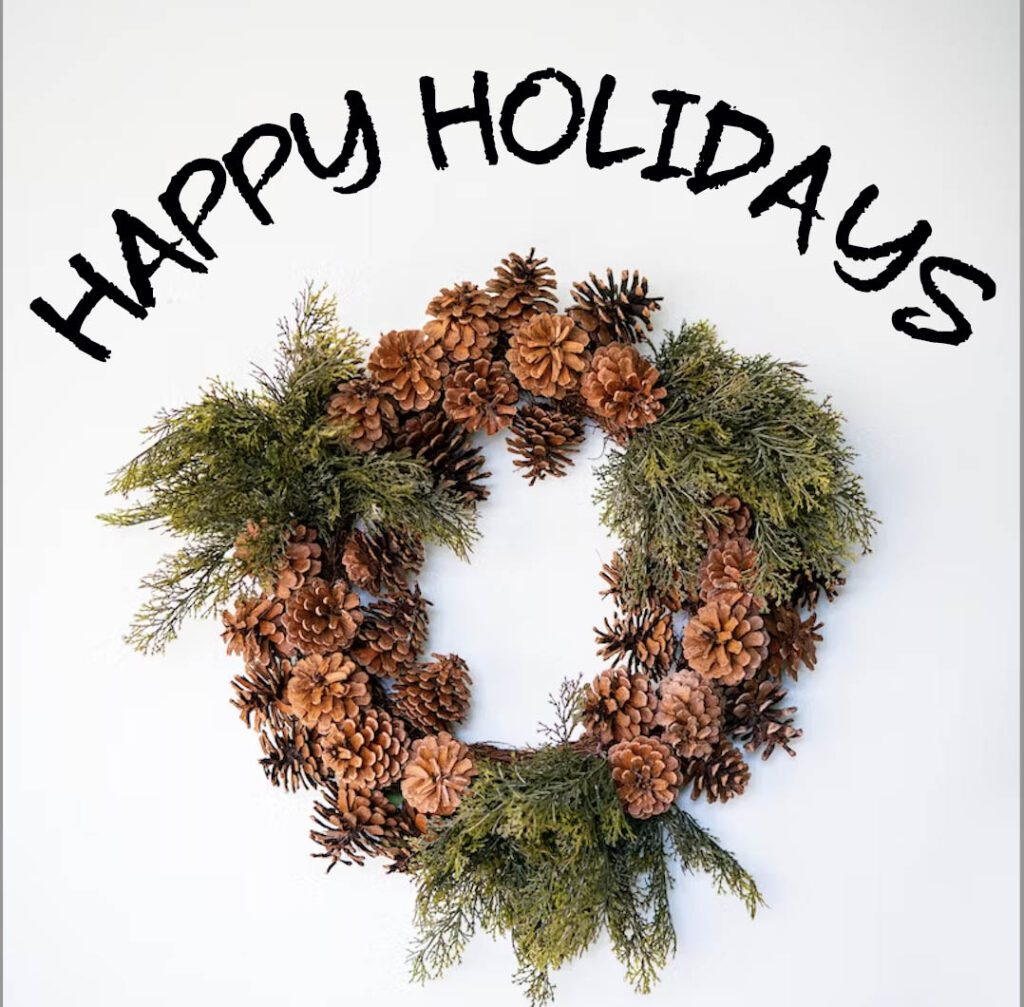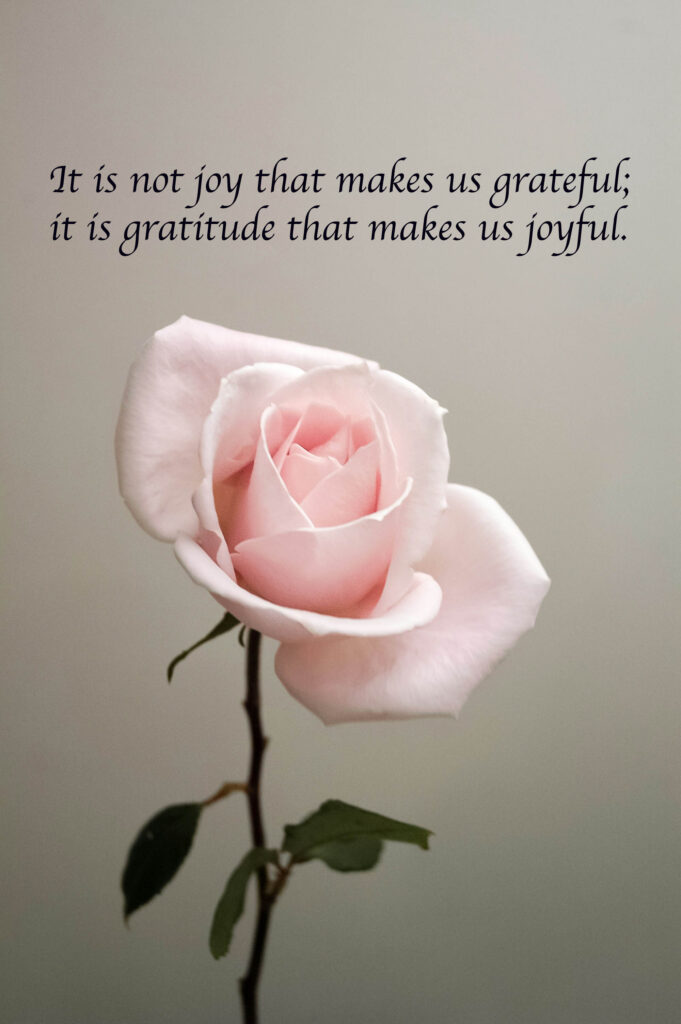… is a trending topic. I won’t comment on the current situation, not today, anyway. My story on tipping happened 69 years ago. It’s in my book of memoirs: That’s Life—Many Mini-Memoirs,2010, A-Z Publishing. (Click on book title for more info.)
To Tip or Not to Tip…that is the question
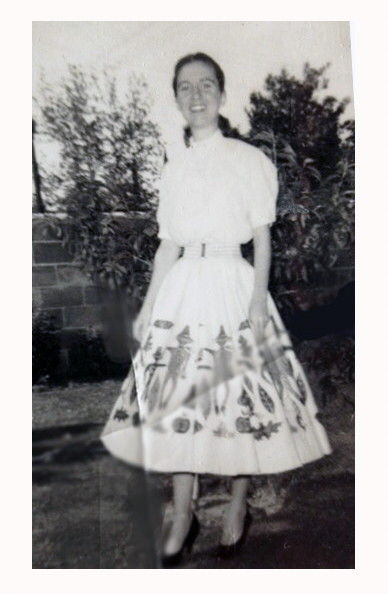
Nineteen years old I was, and such a hick from the sticks you wouldn’t believe.
New York City’s heat blasted me as I stepped outside Grand Central Station that July day in 1955. On virtually my first foray out of the San Joaquin Valley, I was en route halfway around the world to Germany. (My husband) John was stationed in Darmstadt, the capital of Hesse, in the center of the country.
Surrounded by my mismatched luggage, I carried everything I couldn’t cram in it: a heavy wool coat and oversized traveling purse draped over one arm; my camera and huge binoculars hung from the other shoulder. With my free hand I hailed a taxi.
A sunflower-yellow cab with a black-and-white checkerboard stripe stopped before me. The driver sat behind the wheel looking at me like, Ya want dis cab or not? If ya wannit, openna damn door and get in.
I opened the rear door, struggled to get my heavy suitcases and all my stuff in the cab, climbed in the backseat and sat down. I gave the name of my hotel and off we drove.
“Where ya from?” he asked. In thick New York-speak. “Yer first trip to New York?” . . . “Whadda ya here for?”
Trying not to appear the proverbial hick, though craning my neck to gape at the city’s skyscrapers, I answered absently.
Once again, in front of the hotel, he just sat there behind the wheel, making no move to open my door or offer assistance with my bags, which was standard procedure back home.
The meter read $1.55. I handed him two $1 bills and held out my hand for change. His jaw dropped. Looking him steadfastly in the eye, I jiggled my hand to indicate I expected change.
“I gotta eat, lady,” he insisted.
I kept my hand in the same demanding position.
He dropped a nickel in it. “I got kids at home, ya know.”
I just stared him in the eye, holding my open hand in his face. Continuing to plead his case, he deposited one nickel at a time until I finally had the full 45¢, whereupon I declared, self-righteous as all get-out, “A tip is for extra service, not for just doing what you’re already getting paid to do.” I was downright proud of myself for not letting this city-slicker cab driver take advantage of me. In a huff I unloaded my belongings onto the sidewalk. He drove away shaking his head.
Two days later, en route to the SS Hollendam for the trans-Atlantic voyage, I returned to Grand Central Station to collect the rest of my luggage—a steamer trunk and a foot locker—from the baggage dock. A Redcap loaded them onto a cart, which he pushed through the station to the sidewalk. After he lashed my bulky gear to the rack on the back of the cab I handed him a generous tip—a couple of bucks.
He held up his hand like a traffic cop, shook his head, and set me straight. “The standard charge is a buck-fifty per item . . . plus a tip.”
“Oh!” I flushed hot-flash fuschia. I have a feeling we’re not in Kansas anymore, Toto.
I gave him the full amount, plus a bit more, and got back in the cab. When we got to the Holland America pier in New Jersey where the Hollendam was moored, I gave this cabbie his full tip and some extra.
Thus did I learn my first lesson in the ways of the world.
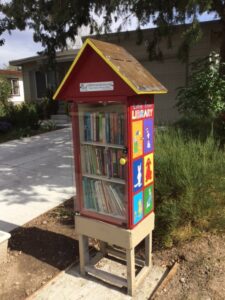 I had intended to write this blog about my Little Free Library, but it was going to be a different blog. I was going to write about the things I’ve learned having a Little Free Library in my front yard: I put it there for the people in my neighborhood, a working class neighborhood with many immigrant families, far away from any public library.
I had intended to write this blog about my Little Free Library, but it was going to be a different blog. I was going to write about the things I’ve learned having a Little Free Library in my front yard: I put it there for the people in my neighborhood, a working class neighborhood with many immigrant families, far away from any public library.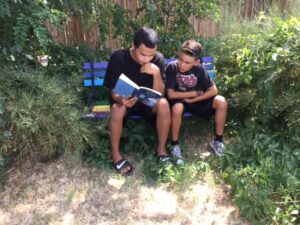
 I’ve discovered that adults get more use out of it than any other age group. That’s okay. I’m for reading, regardless of age.
I’ve discovered that adults get more use out of it than any other age group. That’s okay. I’m for reading, regardless of age.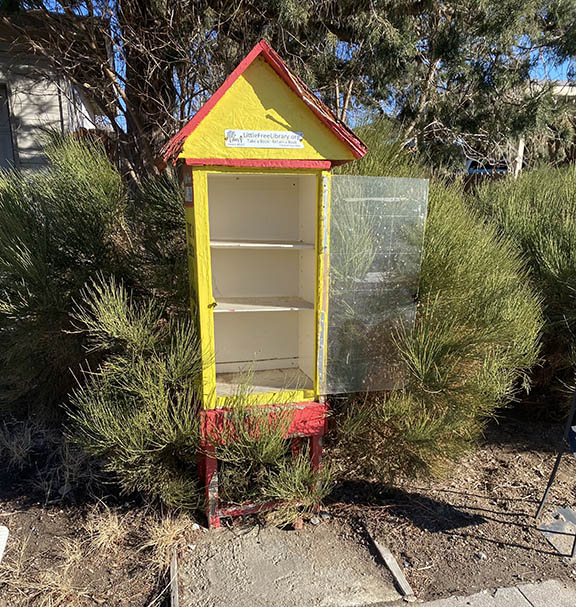 library completely cleaned out. Empty. Not a single book was left: 75- 100 books, GONE. I don’t know, maybe the thief needs the books more than my neighborhood does.
library completely cleaned out. Empty. Not a single book was left: 75- 100 books, GONE. I don’t know, maybe the thief needs the books more than my neighborhood does. Fireworks—pyrotechnics—are such a big part of New Year’s Eve celebrations that it’s hard to imagine this night without them. It wasn’t always that way, though. It’s a relatively recent development in America.
Fireworks—pyrotechnics—are such a big part of New Year’s Eve celebrations that it’s hard to imagine this night without them. It wasn’t always that way, though. It’s a relatively recent development in America.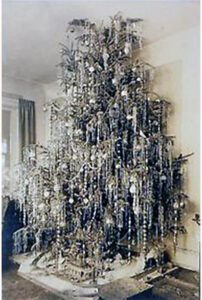 My sister Patty (age 7) and I (5) had 7-Up. The round oak dining table beneath the gas-lit chandelier was laden with Danish delicacies: Christmas cookies and cakes, open-faced sandwiches, et cetera. A Christmas tree stood between the two windows in the combination living/dining room. It was decorated with antique glass ornaments and strings of large multi-colored lights which, if, one went out, they all did. And it was loaded with tinsel painstakingly applied, one strand at a time—lots of tinsel twisting and glistening with any movement in the room. Grandma’s pump organ sat next to the window; I think I remember someone playing Christmas carols and everyone singing, but I might be making that up.
My sister Patty (age 7) and I (5) had 7-Up. The round oak dining table beneath the gas-lit chandelier was laden with Danish delicacies: Christmas cookies and cakes, open-faced sandwiches, et cetera. A Christmas tree stood between the two windows in the combination living/dining room. It was decorated with antique glass ornaments and strings of large multi-colored lights which, if, one went out, they all did. And it was loaded with tinsel painstakingly applied, one strand at a time—lots of tinsel twisting and glistening with any movement in the room. Grandma’s pump organ sat next to the window; I think I remember someone playing Christmas carols and everyone singing, but I might be making that up.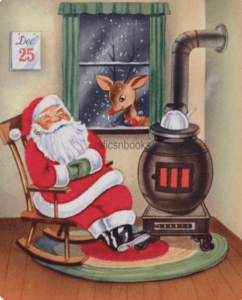
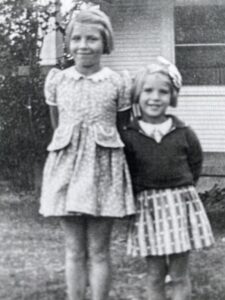 I don’t remember the gifts, only that Santa came in through the window and gave us presents. I do recall the excitement my sister and I felt at the center of attention. I recall the smiles on the adults’ faces as we giggled and timidly approached Santa for a gift.
I don’t remember the gifts, only that Santa came in through the window and gave us presents. I do recall the excitement my sister and I felt at the center of attention. I recall the smiles on the adults’ faces as we giggled and timidly approached Santa for a gift.